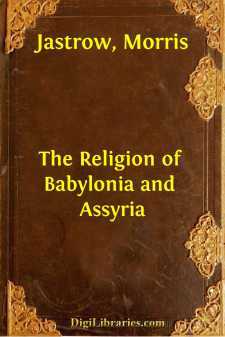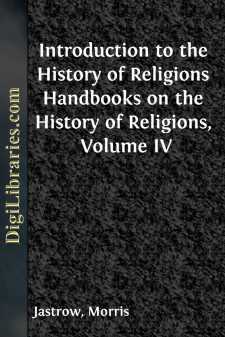Categories
- Antiques & Collectibles 13
- Architecture 36
- Art 48
- Bibles 22
- Biography & Autobiography 813
- Body, Mind & Spirit 142
- Business & Economics 28
- Children's Books 12
- Children's Fiction 9
- Computers 4
- Cooking 94
- Crafts & Hobbies 4
- Drama 346
- Education 46
- Family & Relationships 57
- Fiction 11828
- Games 19
- Gardening 17
- Health & Fitness 34
- History 1377
- House & Home 1
- Humor 147
- Juvenile Fiction 1873
- Juvenile Nonfiction 202
- Language Arts & Disciplines 88
- Law 16
- Literary Collections 686
- Literary Criticism 179
- Mathematics 13
- Medical 41
- Music 40
- Nature 179
- Non-Classifiable 1768
- Performing Arts 7
- Periodicals 1453
- Philosophy 64
- Photography 2
- Poetry 896
- Political Science 203
- Psychology 42
- Reference 154
- Religion 513
- Science 126
- Self-Help 84
- Social Science 81
- Sports & Recreation 34
- Study Aids 3
- Technology & Engineering 59
- Transportation 23
- Travel 463
- True Crime 29
The Religion of Babylonia and Assyria
by: Morris Jastrow
Description:
Excerpt
PREFACE.
It requires no profound knowledge to reach the conclusion that the time has not yet come for an exhaustive treatise on the religion of Babylonia and Assyria. But even if our knowledge of this religion were more advanced than it is, the utility of an exhaustive treatment might still be questioned. Exhaustive treatises are apt to be exhausting to both reader and author; and however exhaustive (or exhausting) such a treatise may be, it cannot be final except in the fond imagination of the writer. For as long as activity prevails in any branch of science, all results are provisional. Increasing knowledge leads necessarily to a change of perspective and to a readjustment of views. The chief reason for writing a book is to prepare the way for the next one on the same subject.
In accordance with the general plan of this Series of Handbooks, it has been my chief aim to gather together in convenient arrangement and readable form what is at present known about the religion of the Babylonians and Assyrians. The investigations of scholars are scattered through a large variety of periodicals and monographs. The time has come for focusing the results reached, for sifting the certain from the uncertain, and the uncertain from the false. This work of gathering the disjecta membra of Assyriological science is essential to future progress. If I have succeeded in my chief aim, I shall feel amply repaid for the labor involved.
In order that the book may serve as a guide to students, the names of those to whose researches our present knowledge of the subject is due have frequently been introduced, and it will be found, I trust, that I have been fair to all. At the same time, I have naturally not hesitated to indicate my dissent from views advanced by this or that scholar, and it will also be found, I trust, that in the course of my studies I have advanced the interpretation of the general theme or of specific facts at various points. While, therefore, the book is only in a secondary degree sent forth as an original contribution, the discussion of mooted points will enhance its value, I hope, for the specialist, as well as for the general reader and student for whom, in the first place, the volumes of this series are intended.
The disposition of the subject requires a word of explanation. After the two introductory chapters (common to all the volumes of the series) I have taken up the pantheon as the natural means to a survey of the field. The pantheon is treated, on the basis of the historical texts, in four sections: (1) the old Babylonian period, (2) the middle period, or the pantheon in the days of Hammurabi, (3) the Assyrian pantheon, and (4) the latest or neo-Babylonian period. The most difficult phase has naturally been the old Babylonian pantheon. Much is uncertain here. Not to speak of the chronology which is still to a large extent guesswork, the identification of many of the gods occurring in the oldest inscriptions, with their later equivalents, must be postponed till future discoveries shall have cleared away the many obstacles which beset the path of the scholar....



